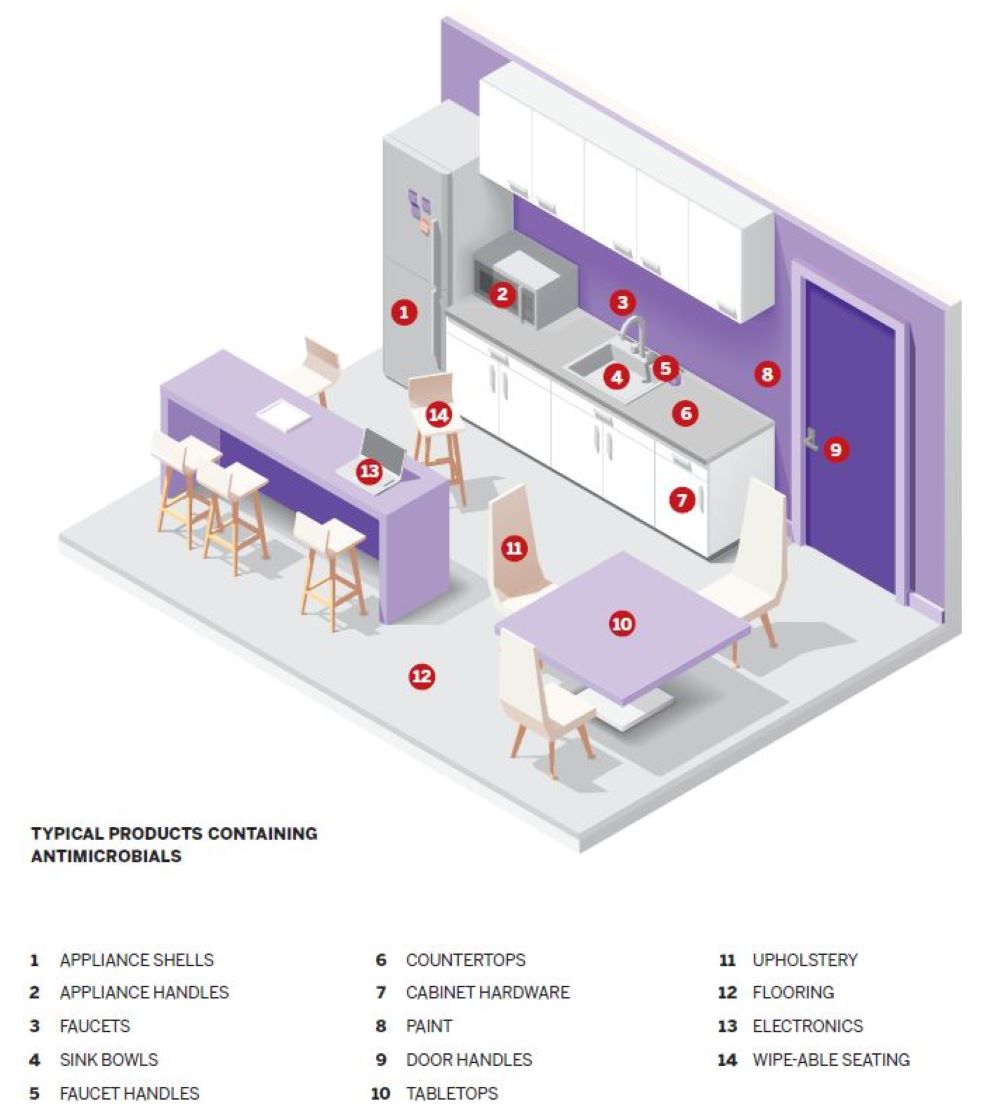Green building experts urge caution in use of antimicrobial building materials
Building materials containing chemicals such as triclosan have no proven health benefit—and have been linked to hormone disruption and environmental harm.
A joint statement released today by green building organizations, architects, and scientists suggests that building materials with added antimicrobials have no proven health benefit—and could potentially be harmful.
The signed authors of the statement comprise Healthy Building Network, Green Science Policy Institute, Perkins&Will, International Living Future Institute and Health Product Declaration Collaborative. Additional signatories include Heather Buckley, Assistant Professor, University of Victoria; Erica Hartmann, Assistant Professor, Northwestern University; Megan R. Schwarzman, Associate Director, Berkeley Center for Green Chemistry; Brightworks Sustainability; ZGF Architects; Health Care Without Harm; Center for Environmental Health; and HKS, Inc.
In response to the surge in advertising for antimicrobial products, the statement’s authors found that outside of limited studies on copper, no building products with added antimicrobials have been shown to reduce viral infections in people. The authors also state that many of the chemicals are linked to health and environmental harm, and could produce resistance to the antibiotics we depend on to fight disease.

“Unfortunately, the science behind antimicrobials in building products doesn’t live up to the marketing claims,” said Tom Bruton, Senior Scientist at the Green Science Policy Institute. “In fact, these products may be providing a false sense of protection from the novel coronavirus while posing other health threats.”
According to the statement, antimicrobials used in building products include quaternary ammonium compounds, which are associated with asthma—a potential risk factor for severe COVID-19. The authors further state that triclosan, which can disrupt hormone functioning, is banned in hand soaps but is still used in some building products. The identities of the chemicals used in building products are often not disclosed.
The statement concludes that antimicrobials should not be used in building products when not required for product preservation. The authors urge building product manufacturers to practice truthful advertising and to disclose the compounds they use. They also call for more hazard assessments and research.
“Now more than ever, we should strive to create healthier spaces for people to live and work,” said Gina Ciganik, Chief Executive Officer of Healthy Building Network. “Architects, designers, and building owners should take a precautionary approach and avoid unproven solutions with known harms.”
